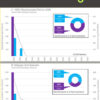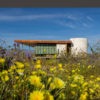I am co-teaching an architecture studio this term, and a student recently grumbled that an exercise we had given was not important enough to bother with. The grumbling raised the question of how an architect handles the relations between some factors, which seem important or noble or profound, and others, which seem less so. I took this stab at it:
Architecture is thick with reciprocities, between use and setting, between capital and desire, the seen and the known, stone and thought, welfare and will.
A singularity is foregone. Use is a rock rolling down a hill; so are context and structure and process and material and sustainability: separately, so many rocks rolling down a hill.
But we want them to act together, so we invite a conversation:
“This is what I am; here is where I tend. What about you?”
We give each a voice, so that context may speak to use and use to material and material to capital and capital to desire and desire to use and material to context and so on and on and back around. What can each offer? What are the terms of context? What is the coin of use?
None of these things need be, in themselves, complex or difficult or obscure. Complexity is in the relationships, forged in conversation, full (like any conversation) of tensions and silences.
What we want to do is to say clearly and simply whatever we can say about each factor that goes into the making of a building, not to judge one factor worthy and one not, one profound and another superficial, one current and one passé.
For three reasons:
first, because architecture is the weaving together of a superabundance of possibilities, not their reduction;
second, because a building must have many ways to move people, because people are differently moved; and
third, because we ourselves must speak to many different sorts of people, if we are to make buildings at all.
Originally published 2nd quarter 2006 in arcCA 06.2, “L.A.”





